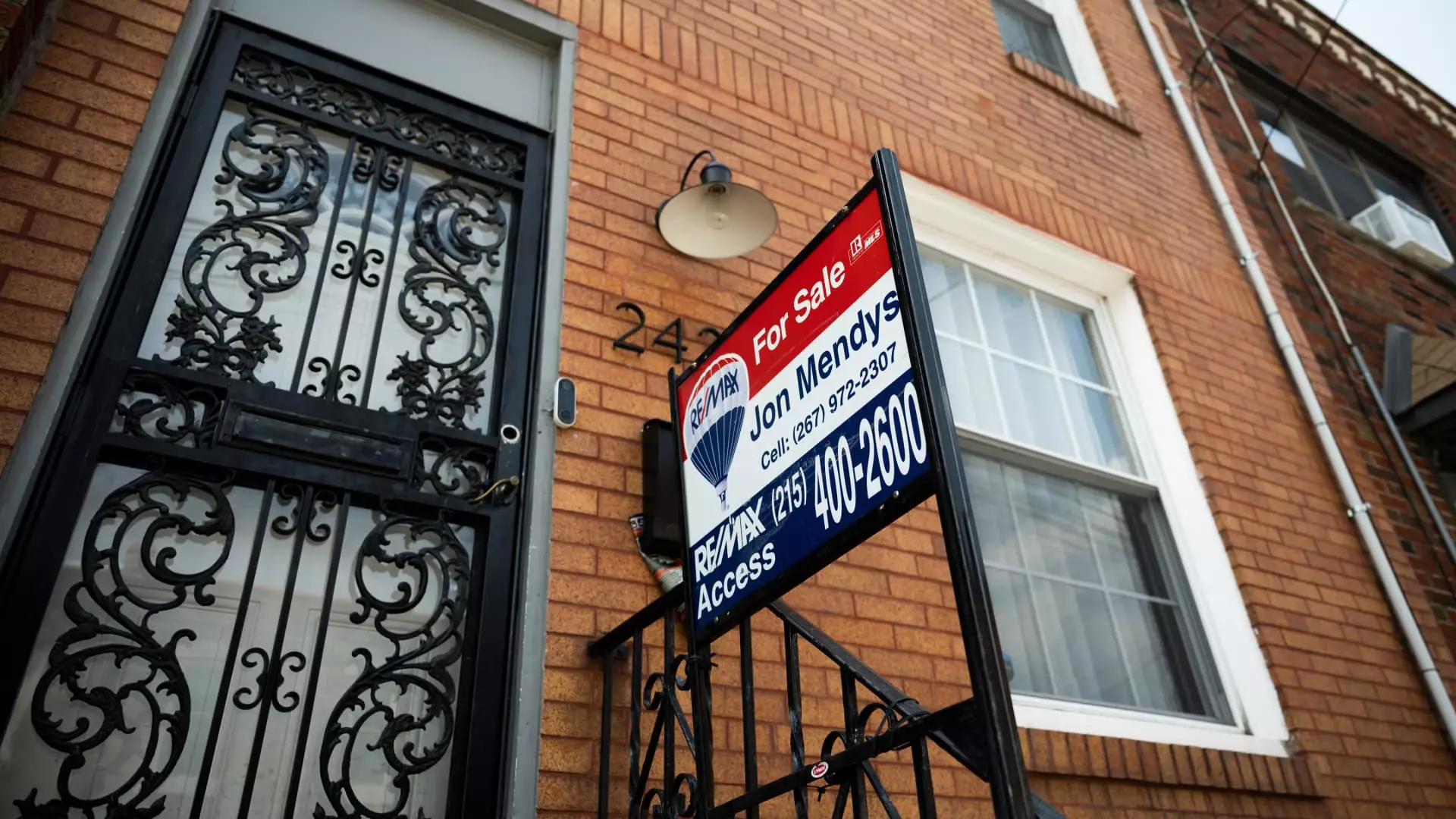The U.S. housing market is exhibiting signs of significant distress as it grapples with a combination of high mortgage rates, inflated home prices, and a scarce inventory of available properties. Recent data from the National Association of Realtors (NAR) indicates that sales of previously owned homes dropped by 4.9% in January, resulting in an annualized figure of 4.08 million units. This fall was steeper than the anticipated decline of 2.6%. Although sales showed a slight increase of 2% compared to January 2024, they remain close to a nadir not seen for approximately 15 years.
The reported sales figures reflect transactions that took place in the preceding months, particularly contracts likely signed when mortgage rates dipped from the previous threshold of over 7% down into the 6% range. Analyst Lawrence Yun highlights a persistent issue in the housing sector, as mortgage rates have remained stubbornly high even in light of the Federal Reserve’s attempts to lower short-term interest rates. For potential buyers, the interplay between soaring home prices and consistently high mortgage rates exacerbates the issue of housing affordability.
As of the end of January, the inventory of homes for sale reached 1.18 million, marking a remarkable 3.5% increase from December and a 17% rise from the previous January. Nevertheless, this uptick in inventory highlights a market still constrained, with a supply that equates to only 3.5 months at the current sales rate. In real estate, a balanced market is typically characterized by a six-month inventory supply, implying that sellers currently hold the advantage in negotiations.
The average time a home remained on the market in January increased to 41 days, the highest duration recorded since January 2020, just prior to the COVID-19 pandemic. Despite the growth in inventory, tightened supply conditions continue to put upward pressure on prices. The median home price recorded in January reached an unprecedented $396,900, representing a 4.8% year-on-year increase. Notably, all regions tracked by the NAR experienced price increases, reinforcing the notion of a costly marketplace.
The data further reveals that around 15% of homes sold in January were above the asking price, a figure that has remained relatively stable compared to the same period last year. In the context of a market where “strongly qualified buyers” can begin to engage in transactions due to increased inventory, it is crucial to recognize that enhanced housing supply is only part of the equation. Many prospective homeowners are also waiting for mortgage rates to decrease for them to consider making purchases, whether it is to downsize or to step into homeownership for the first time.
Another significant observation from the report is the prevalence of all-cash offers among buyers, which constituted 29% of sales, although this is a decline from 32% the previous year. This statistic underscores the increasing difficulties first-time buyers face in gaining traction in a financial landscape dominated by cash transactions. Currently, first-time homebuyers account for just 28% of the market, a figure disproportionately lower than the historical average of around 40%.
Interestingly, the housing market is displaying inconsistencies across various price points. Sales in the lower price range of homes ($100,000 to $250,000) declined by 1.2% year-on-year, while the segment above $1 million experienced a significant surge of nearly 27%. This divergence suggests that affluent buyers remain active, while those in more modest financial situations are being squeezed out by the affordability crisis.
Realtors emphasize the paradox of increased advertising in the form of “For Sale” signs without the accompanying buyer interest. Lawrence Yun aptly states that while the number of homes being listed is rising, the desired influx of buyers is not materializing. This mismatch between supply and demand is a critical indicator of the challenges facing the U.S. housing market, as it continues to navigate through a prolonged period of instability and uncertainty.
The current housing landscape reflects an array of systemic challenges that affect buyers’ decision-making processes and ultimately drive market trends. Without a significant shift in either mortgage rates or price stabilization, the U.S. housing market faces a precarious future.

